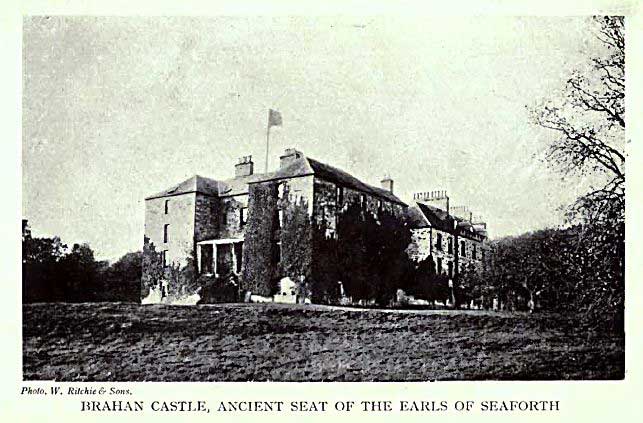Kenneth Mackenzie, 1st Earl Of Seaforth on:
[Wikipedia]
[Google]
[Amazon]
Kenneth Mackenzie, 1st Earl of Seaforth FRS (15 January 1744 – 27 August 1781) was a British peer, politician, soldier and Chief of the 
Highland
Highlands or uplands are areas of high elevation such as a mountainous region, elevated mountainous plateau or high hills. Generally, ''upland'' refers to a range of hills, typically from up to , while ''highland'' is usually reserved for range ...
Clan Mackenzie
Clan Mackenzie ( ) is a Highland Scottish clan associated with Kintail and Ross-shire. Its chiefs trace their lineage to the 12th century, though the earliest recorded chief is Alexander Mackenzie of Kintail, who died after 1471. The clan suppo ...
.

Origins
Mackenzie was the son of Kenneth Mackenzie, Lord Fortrose (died 1761) by Mary, the eldest daughter of Alexander Stewart, 6th Earl of Galloway. His paternal grandfather was the attainted William Mackenzie, 5th Earl of Seaforth, whose estates he repurchased from the government. The Earls of Seaforth descended from the ancient family of Mackenzie of Kintail. Sir James Balfour Paul, ''The Scots Peerage
''The Scots Peerage'' is a nine-volume book series of the Scottish nobility compiled and edited by Sir James Balfour Paul, published in Edinburgh from 1904 to 1914. The full title is ''The Scots Peerage: Founded on Wood's Edition of Sir Rober ...
'', volume 7 (David Douglas, Edinburgh, 1910), at pages 512-513
Career
Mackenzie was created Viscount Fortrose and Baron Ardelve in thePeerage of Ireland
The peerage of Ireland consists of those Peerage, titles of nobility created by the English monarchs in their capacity as Lordship of Ireland, Lord or Monarchy of Ireland, King of Ireland, or later by monarchs of the United Kingdom of Great B ...
on 18 November 1766. He was a Member of Parliament for Caithness
Caithness (; ; ) is a Shires of Scotland, historic county, registration county and Lieutenancy areas of Scotland, lieutenancy area of Scotland.
There are two towns, being Wick, Caithness, Wick, which was the county town, and Thurso. The count ...
from 1768 to 1774. On 3 December 1771, he was created Earl of Seaforth (a new peerage, also in the Peerage of Ireland).
On 12 November 1772, Mackenzie was elected a Fellow of the Royal Society
The Royal Society, formally The Royal Society of London for Improving Natural Knowledge, is a learned society and the United Kingdom's national academy of sciences. The society fulfils a number of roles: promoting science and its benefits, re ...
.
As an act of gratitude for the favours he had received, Mackenzie raised a regiment, the 78th Seaforth (Highland) Regiment, serving as its Lieutenant Colonel Commandant from 29 December 1777. In June 1781 he sailed with the regiment when it embarked for India, but on 27 August 1781 he died on the journey and was buried at sea. He was succeeded as Lieutenant-Colonel Commandant by his cousin Thomas Frederick Mackenzie Humberston.
On his death his Irish earldom became extinct. He was succeeded as Chief of the Clan Mackenzie by his cousin Thomas Frederick Mackenzie Humberston.
Family
Mackenzie married first Lady Caroline Stanhope (1747–1767), daughter of William Stanhope, 2nd Earl of Harrington by whom he had one daughter, Lady Caroline Mackenzie (1766–1847), who married (d. 1833) and had children. He married secondly Harriet Powell, or Lamb (died 11 December 1779), the daughter of anapothecary
''Apothecary'' () is an Early Modern English, archaic English term for a medicine, medical professional who formulates and dispenses ''materia medica'' (medicine) to physicians, surgeons and patients. The modern terms ''pharmacist'' and, in Brit ...
. Sir James Balfour Paul describes her tactfully as "a fashionable beauty of the town", but Horace Bleackley is rather more explicit:
The graceful Harriet Powell, equally frail and famous, whose winsome face was portrayed in many a mezzotint, had spent her early youth as an inmate of Mrs Hayes's disreputable establishment in King's Place, but now at last she had become faithful to one man, and was keeping house with Lord Seaforth, the creator of a famous regiment.
Reputation
Seaforth's biographer has summarised him as:...a dandy, musician and connoisseur, an adventurer and lady's man, Chief of his Clan, and founding Colonel of his own regiment. A child of the Enlightenment, he delighted in its achievements and greater freedoms – and took full advantage of both. But he was born with too great a sense of entitlement and too little sense of responsibility, and he never found any firm purpose in life.Tony Scotland, ''Gimcrack: a Rake's Progress'' (Shelf Lives, Baughurst, 2020)
References
, - {{DEFAULTSORT:Seaforth, Kenneth Mackenzie, 1st Earl Of 1744 births 1781 deaths Nobility from Highland (council area) British MPs 1768–1774 Earls in the Peerage of Ireland Fellows of the Royal Society Members of the Parliament of Great Britain for Scottish constituenciesKenneth
Kenneth is a given name of Gaelic origin. The name is an Anglicised form of two entirely different Gaelic personal names: ''Cainnech'' and '' Cináed''. The modern Gaelic form of ''Cainnech'' is ''Coinneach''; the name was derived from a byna ...
72nd Highlanders officers
Seaforth, Kenneth Mackenzie, 4th Marquess of
Peers of Ireland created by George III
Seaforth Highlanders officers
People who died at sea
201